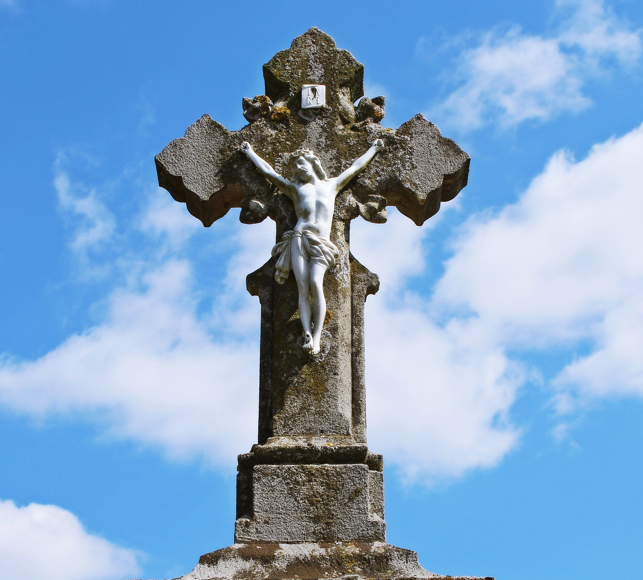Let’s explore China National Religion. Religion has always played a significant role in China’s history and culture. Over the centuries, various religious beliefs and practices have been embraced and integrated into the Chinese society. Today, China recognizes five official religions that are protected by the state: Buddhism, Taoism, Islam, Protestantism, and Catholicism. In this article, we will delve into the history, beliefs, and practices of these religions in China, and how they coexist in the country.
History of China National Religion
Religion has been an integral part of China’s history and culture for over 2,000 years. The early Chinese religions were polytheistic and animistic, and the worship of ancestors played a significant role. The introduction of Buddhism from India during the Han dynasty (206 BCE-220 CE) had a profound impact on Chinese religion and culture. Taoism emerged as a distinct religion during the Tang dynasty (618-907 CE). Islam was introduced to China by Arab traders during the Tang dynasty, and Christianity arrived in China in the 7th century.
Buddhism in China
History of Buddhism in China
Buddhism arrived in China during the Han dynasty through the Silk Road. It became widespread during the Tang dynasty and had a significant influence on Chinese culture, art, and literature. During the Ming (1368-1644) and Qing (1644-1912) dynasties, Buddhism experienced a revival, and many temples and monasteries were built.
Beliefs and Practices of Buddhism in China
Chinese Buddhism has unique features that distinguish it from other forms of Buddhism. It integrates Taoist and Confucian elements and emphasizes the importance of filial piety and ancestor worship. Chinese Buddhism also incorporates Mahayana Buddhism, which emphasizes compassion and the salvation of all beings. Chinese Buddhists practice meditation, recitation of sutras, and pilgrimage to holy sites.
Famous Buddhist Temples in China
China has many famous Buddhist temples, including the Shaolin Temple in Henan province, which is famous for its martial arts; the Wutai Mountain in Shanxi province, which is one of the four sacred mountains of Buddhism; and the Leshan Giant Buddha in Sichuan province.
Taoism in China
History of Taoism in China
Taoism emerged as a distinct religion during the Tang dynasty and is based on the teachings of the philosopher Laozi. It emphasizes the concept of “Tao,” which means “the way” or “the path.” Taoism values simplicity, naturalness, and the harmonious relationship between humans and nature.
Beliefs and Practices of Taoism in China
Taoism has a unique approach to spirituality and focuses on individual cultivation and self-improvement. It incorporates elements of Chinese folklore and ancestor worship and includes practices such as meditation, feng shui, and qigong.
Famous Taoist Temples in China
China has many famous Taoist temples, including the Wudang Mountain in Hubei province, which is one of the most sacred mountains of Taoism; the Longhu Mountain in Jiangxi province, which is famous for its natural scenery and Taoist culture; and the Baiyun Mountain in Guangdong province, which is a popular tourist destination.
Islam in China
History of Islam in China
Islam was introduced to China during the Tang dynasty by Arab traders and had a significant impact on Chinese culture and trade. Islam spread rapidly during the Yuan dynasty (1271-1368) when Mongol rulers converted to Islam. Today, China has a significant Muslim population, mostly living in the northwest region.
Beliefs and Practices of Islam in China
Chinese Muslims practice Sunni Islam and have a distinct cultural identity. They follow the Islamic customs and practices, including praying five times a day, fasting during Ramadan, and performing Hajj to Mecca. Chinese Muslims also incorporate Chinese traditions and rituals, such as eating mooncakes during the Mid-Autumn Festival.
Famous Mosques in China
China has many famous mosques, including the Great Mosque of Xi’an in Shaanxi province, which is one of the oldest and largest mosques in China; the Id Kah Mosque in Xinjiang province, which is a famous tourist attraction and a symbol of Islamic culture in China; and the Huaisheng Mosque in Guangzhou, which is one of the oldest mosques in China.
Protestantism in China
History of Protestantism in China
Protestantism was introduced to China by Christian missionaries in the 19th century and had a significant impact on Chinese society and culture. Protestantism played a role in the Taiping Rebellion, a major civil war that lasted from 1850 to 1864.
Beliefs and Practices of Protestantism in China
Chinese Protestants follow the teachings of Jesus Christ and have their own unique traditions and practices. They emphasize the importance of individual faith and personal salvation and practice baptism, prayer, and reading the Bible.
Famous Protestant Churches in China
China has many famous Protestant churches, including the St. Joseph’s Church in Beijing, which is one of the oldest and largest Catholic churches in China; the Haidian Church in Beijing, which is a popular tourist attraction and a symbol of Protestantism in China; and the Chongwenmen Church in Beijing, which is known for its beautiful stained-glass windows.
Catholicism in China
History of Catholicism in China
Catholicism was introduced to China by Jesuit missionaries in the 16th century and had a significant impact on Chinese culture and society. Catholicism played a role in the Boxer Rebellion, a major uprising against foreign influence in China in 1900.
Beliefs and Practices of Catholicism in China
China has many famous Catholic churches, including the Cathedral of the Immaculate Conception in Beijing, which is the largest Catholic church in China and a national heritage site; the St. Michael’s Cathedral in Qingdao, which is a beautiful example of European architecture in China; and the Sacred Heart Cathedral in Guangzhou, which is one of the oldest and most beautiful Catholic churches in China.
Conclusion
China has a rich and diverse religious heritage, and its major religions have played a significant role in shaping Chinese culture and society. Buddhism, Taoism, Islam, Protestantism, and Catholicism all have unique beliefs and practices that have evolved over centuries. Despite political and social changes, these religions have persisted in China and continue to have a profound impact on its people. By understanding the history and traditions of these religions, we can gain a deeper appreciation for the rich cultural heritage of China.
FAQs
- What is the most popular religion in China?
The most popular religion in China is Buddhism, followed by Taoism, Islam, Protestantism, and Catholicism.
- Is China an atheist country?
The Chinese government is officially atheist, but many Chinese people practice religion.
- Are there any restrictions on practicing religion in China?
The Chinese government restricts certain religious practices and organizations that are deemed a threat to national security or social stability.
- How has religion influenced Chinese culture?
Religion has had a significant influence on Chinese culture, shaping its art, literature, philosophy, and social customs.
- Can foreigners practice religion in China?
Foreigners are allowed to practice religion in China, but they must comply with the laws and regulations regarding religious activities.
References
- “China.” Encyclopædia Britannica. Accessed April 6, 2023. https://www.britannica.com/place/China.
- “Religion in China: Some Facts and Figures.” Pew Research Center. March 2, 2018. https://www.pewresearch.org/fact-tank/2018/03/02/religion-in-china-some-facts-and-figures/.
- “Religions in China.” ChinaHighlights. Accessed April 6, 2023. https://www.chinahighlights.com/travelguide/culture/religion.htm.

